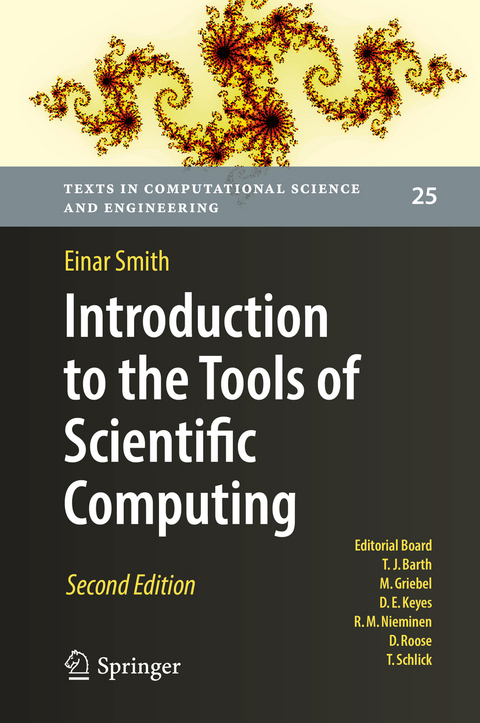
Introduction to the Tools of Scientific Computing
Springer International Publishing (Verlag)
978-3-031-16971-7 (ISBN)
The book provides an introduction to common programming tools and methods in numerical mathematics and scientific computing. Unlike standard approaches, it does not focus on any specific language, but aims to explain the underlying ideas.
Typically, new concepts are first introduced in the particularly user-friendly Python language and then transferred and extended in various programming environments from C/C++, Julia and MATLAB to Maple and Mathematica. This includes various approaches to distributed computing. By examining and comparing different languages, the book is also helpful for mathematicians and practitioners in deciding which programming language to use for which purposes.
At a more advanced level, special tools for the automated solution of partial differential equations using the finite element method are discussed. On a more experimental level, the basic methods of scientific machine learning in artificial neural networks are explained and illustrated.
Einar Smith holds academic degrees in Mathematics from the Unversity of Bonn, in Economics from the University of Oslo, and in Computer Science from the University of Hamburg. He has published a textbook on Mathematical Computability Theory, and a biography of the German computer scientist C.A. Petri. Both books have been published by Springer. In recent years he has mainly been concerned with the teaching of numerical methods at the University of Bonn, with an emphasis on computer programming.
Introduction.- Part I, Background.- Part II, Core Languages.- Part III, Commercial Computing Environments.- Part IV, Distributed Computing.- Part V, Specialized Programming Environments.- References.- Index.
"This book covers a lot of ground, and overall it does so very well. ... On nearly every page, the reader can find numerous code snippets ... that are explained in great detail. ... I can warmly recommend it to my colleagues and STEM students as a welcome resource to help them with this decision tree." (Andreas Mang, SIAM Review, Vol. 64 (2), June, 2022)
“This book covers a lot of ground, and overall it does so very well. … On nearly every page, the reader can find numerous code snippets … that are explained in great detail. … I can warmly recommend it to my colleagues and STEM students as a welcome resource to help them with this decision tree.” (Andreas Mang, SIAM Review, Vol. 64 (2), June, 2022)
| Erscheinungsdatum | 29.10.2022 |
|---|---|
| Reihe/Serie | Texts in Computational Science and Engineering |
| Zusatzinfo | XIII, 428 p. 1 illus. |
| Verlagsort | Cham |
| Sprache | englisch |
| Maße | 155 x 235 mm |
| Gewicht | 823 g |
| Themenwelt | Mathematik / Informatik ► Informatik ► Theorie / Studium |
| Mathematik / Informatik ► Mathematik ► Analysis | |
| Mathematik / Informatik ► Mathematik ► Wahrscheinlichkeit / Kombinatorik | |
| Schlagworte | C • C++ • Computational Science • Distributed Computing • Julia • Maple • MATLAB • OpenMP • OpenMPI • Python • Scientific Computing |
| ISBN-10 | 3-031-16971-9 / 3031169719 |
| ISBN-13 | 978-3-031-16971-7 / 9783031169717 |
| Zustand | Neuware |
| Haben Sie eine Frage zum Produkt? |
aus dem Bereich


